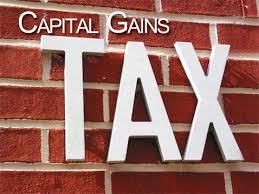
If you have disposed any personal possession such as antiques, jewellery, paintings etc. which are worth more than £6000 you should declare it to HMRC and pay tax on any gains that arise as a result of the disposal.
In other cases where you have to pay Capital Gains is when you sell your property which is not your main home, if you are selling your property which was inherited by you, if you selling your main home and you were renting part of it or it was used for business purposes and if you are selling shares which are not held in ISA. For more information on CGT and selling your family home you can get some detailed information here.
In all the cases above, you need to report it to HMRC in the Self-assessment annual tax return.
The deadline to register for self-assessment tax return is 5 Oct 2020. You need to fill in the paper form of self-assessment tax return on 31 Oct 2020 and the deadline to submit and pay the tax online is 31 Jan 2020.
Capital Gains Tax free allowance is £12300, tax will be paid on the gains from the disposal of the asset above this amount. You can also make use of the reliefs available. However, you need to report it to HMRC even the gains are below the tax free allowance in your self-assessment tax return. If the total value of the asset that you were selling was more than 4 times your allowance and you are registered for self-assessment.
If you are non UK resident you need to fill in the non-resident capital Gains tax return even if your gain is below the tax free allowance or you make a loss.
Make sure that you have all the records of the money received when the asset was sold. You should have a record of the date and the price that you paid to purchase it. It is also important to keep the record of the any other additional costs (if they were incurred) such as professional fees or stamp duty (in case of property)
Capital Gains Tax rates:
If you are a higher or additional tax payer you will pay 20% tax on the gains of chargeable assets except on the gain from the residential property which is 28%.
If you are a basic tax payer you will work out your taxable income after deducting the personal allowance. Deduct any reliefs available. Work out your capital gains and deduct the tax free allowance from your total taxable gains. Add the taxable capital gains to the taxable income. If the total of both is within the basic rate band then 10 % will be paid on the gains and 18% will be on the gains from the residential property.
Business Asset Disposal Relief:
If you are a sole trader and have owned the business for at least 2 years and you are disposing all or part of the business you can qualify for the business asset disposal relief which means you will pay 10% CGT on the gains from the disposal of part or all of the business. To read more about business asset disposal relief check out our blog here.
We can help you
The tax calculations are not very straight forward. Every situation is different any you might qualify for reliefs which can mitigate your taxes and you might not be aware of. To make sure that you calculate your taxes accurately and in the most efficient way you can contact Taxaccolega at 020 8127 0728 and we will advise you, we can do all the calculations for you and report it to HMRC in the timely manner. If you have any query end us a quick message here.
























